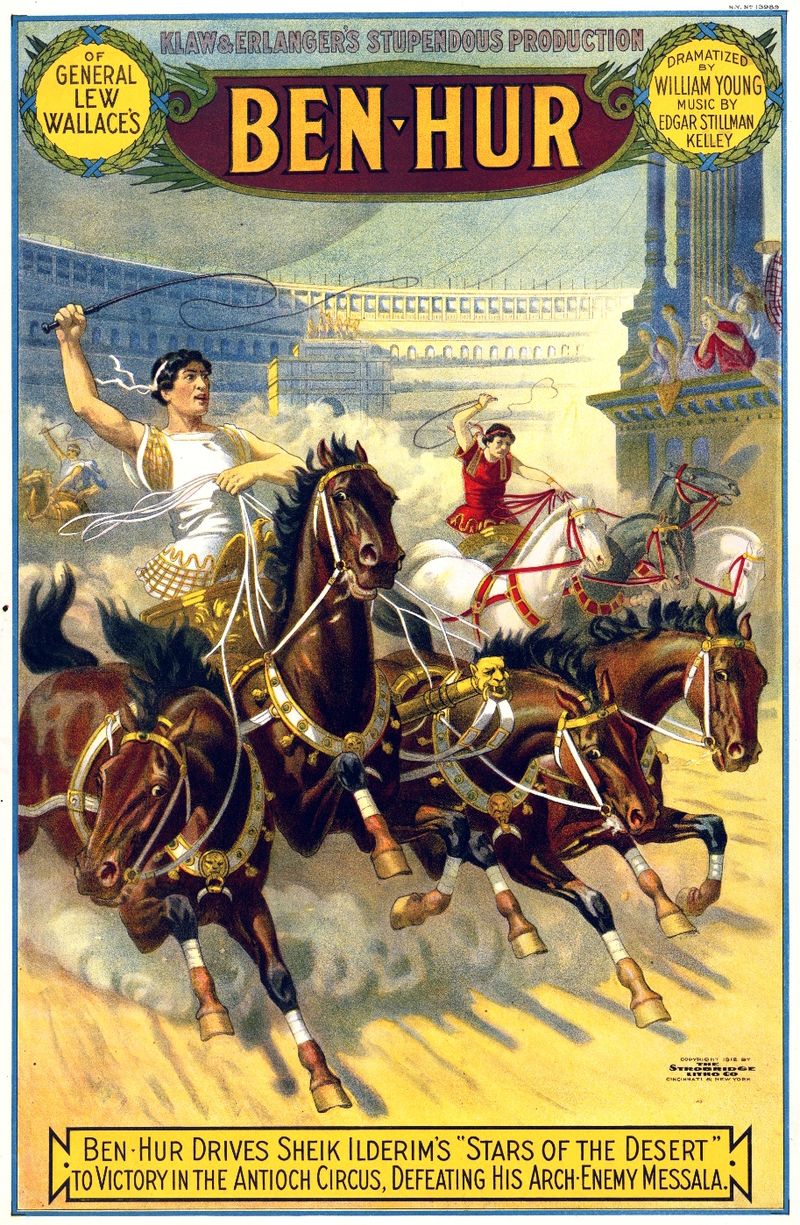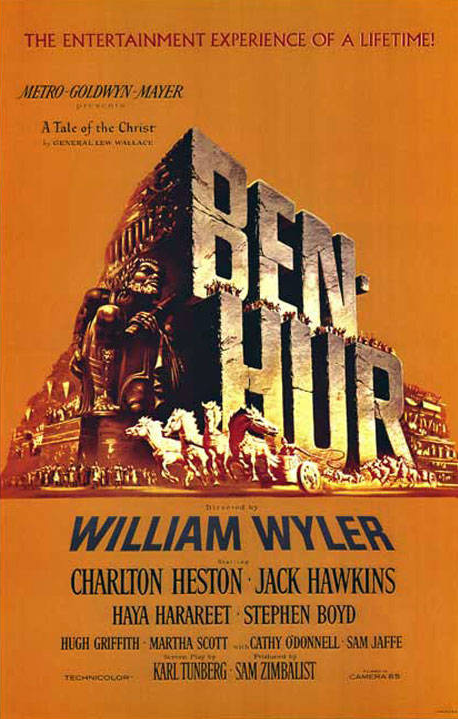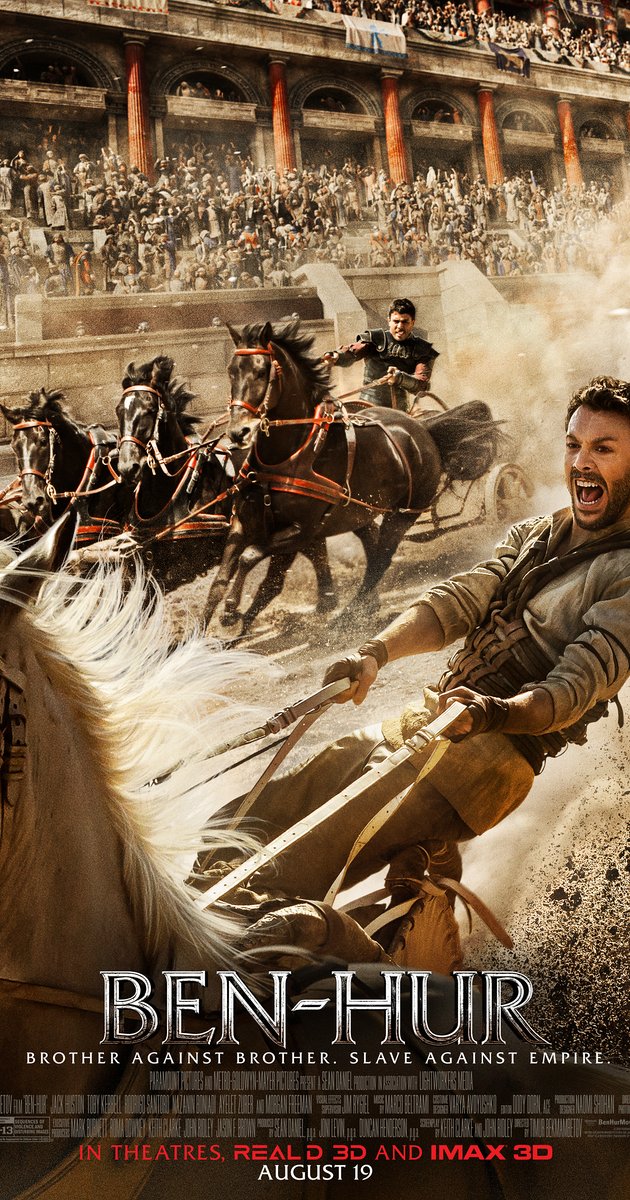I saw it this weekend and must ask: Why? Why a remake of Ben-Hur? Why ever remake anything, for that matter? Are there no original ideas?
Broadway does it, of course, bringing back classic plays and musicals or rejigging movies and pop songs for the stage. Audiences love to hear again the music they grew up with. But will they love another version of one of the most-honored and beloved movies of all time: William Wyler’s 1959 version of the popular Lew Wallace novel?
Ben-Hur was 19th-century America’s bestselling book, just ahead of Uncle Tom’s Cabin. As far as we know, no American president – I suppose it would have to have been Rutherford B. Hayes, since the novel was published in 1880 – ever came up to author General Lew Wallace to congratulate him the way Abraham Lincoln had when he was introduced to Harriet Beecher Stowe: “So this is the little lady,” Lincoln said, “who started this great war.”

Indeed, Hayes – and certainly Ulysses S. Grant before him – might have shunned Wallace, because during the Civil War the future author was a Union brigadier and had been accused – by Grant – of not following orders during the Battle of Shiloh. Although Grant relented, based on evidence he gathered for his 1885 Memoirs, and tried to correct the record on Wallace’s behalf, the charge remained a stain that Wallace wore for the rest of his life: “Shiloh and its slanders!,” he lamented, “Will the world ever acquit me of them?”
It’s hard not to think that Ben-Hur was born out of that experience. Wallace may have seen himself as a combination of the persecuted Jew, Judah Ben-Hur, and the Roman commander Quintus Arius. Both men need mercy, and both receive it in a way, although only Judah gets it from Jesus Christ. It’s Judah who saves Quintus.
Going to the theater in Columbus, Ohio with my parents and brother to see Wyler’s Ben-Hur (at the Cinestage, where it played for forty weeks) was one of the most exciting experiences of my childhood, and it was hardly spoiled when, afterwards, we got to the parking lot to discover a drunk asleep in the backseat of our unlocked Studebaker.
I was in 6th grade – 11 years old. A boy, R.J., in my class stood up one day to announce that he had a new car. Mr. Wilson said: “You mean your parents have a new car?” “No. I do.” Turns out his father had built one for him out of packing crates, wagon wheels, and a lawnmower motor.
I don’t think I was ever more covetous. R.J. drove his car to the playground after school and gave some of us turns driving it. The car – a kind of Soapbox Derby thingy but with an “engine” – was painted red, and on the front his dad had affixed a plastic plaque, which came from a cereal box: the image of a man in a chariot and the name “Ben-Hur.”
It’s all about the chariots, you see.
Certainly the thing most folks remember from Wyler’s movie – the third Hollywood version after silent films in 1907 and 1926 – is that remarkable race around the Jerusalem circus and the whips-and-wheels battle between Judah Ben-Hur (Charlton Heston) and his comrade turned enemy, Messala (Stephen Boyd).

The latest remake of the Wallace novel is in theaters now, directed by Timur (Abraham Lincoln: Vampire Hunter) Bekmambetov, with Jack Huston as Judah and Toby Kebbell as Messala. The chariot race is good, although it strains its seams under bloated CGI and F/X. All movies present unreality, but in some its rather closer to reality.
Wyler’s film (like the silent iterations of directors Sidney Olcott and Fred Niblo) features the race as a key element, but the race does not define the film. Christ does. The paradox is that Jesus figures more prominently in Bekmambetov’s version, yet his film is still more about the race than about the Lord.
Befitting a true epic, Wyler follows Wallace’s “Book First” (i.e. part one), which is entirely about the Incarnation, with Mary and Joseph, the Nativity, and the Magi, because, as his subtitle has it, Ben-Hur is “A Tale of the Christ.”
Wallace’s literary Judah is very much a Zealot – a fact that the new film hints at yet lets fizzle – who abandons “politics” when he hears the Nazarene preach. But all this comes in the novel well after the chariot duel with Messala, during which Judah achieves the vengeance he has long sought against the “brother” who had betrayed him, sending Judah to five years as a galley slave and condemning his mother and sister to prison and leprosy.
Much has been made about the themes of forgiveness and reconciliation in the new film, and that’s fine, although I suspect Wallace would be appalled. His Messala survives (Bekmambetov also lets him live), though crippled. But he and Judah cannot make peace, because Messala descends into bitterness. As some men do.
And when the movie gets “Christian,” it gets preachy – a kind of “soap-box” derby in its own right.
To be fair, however, I suppose if this film were in succession after the 1907 and 1926 versions – had there not been, in other words, that other one with its great cast and its astonishing cinematography and its eleven Oscars – one might find the 2016 remake rather more appealing than it actually is.
___
With Morgan Freeman as Ilderim, an Arab owner of Arabian horses. Ben-Hur is rated PG-13 for, yes, the chariot race in which gore triumphs over grandeur. It’s available in some Cineplex-style theaters in an alphanumeric soup of formats: 2D, IMAX, 3D, Digital 3D, RealD 3D, and IMAX 3D. Take your pick.
















